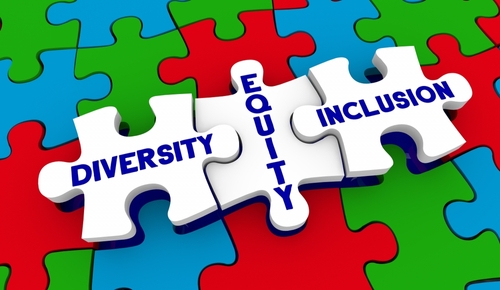Businesses say they want to promote diversity, equity, and inclusion (DEI), but many are failing to make progress toward their DEI goals, according to the 500+ HR managers who contributed to the 2022 Torch DEI Survey. Torch’s Elizabeth Weingarten reveals the hidden barriers to DEI progress and offers advice for HR professionals looking to do better with DEI.
Imagine you’re rowing a boat in the middle of the ocean, but as much as you row, you can’t seem to get closer to shore.
What you can’t see is there’s an anchor tied to the bottom of your boat—a hidden weight holding you in place.
This is what many organizational leaders experience when trying to drive DEI changes inside their organizations. They’re pouring their energy into creating and executing programs but not making the progress they want to see.
Barriers and Opportunities
What’s going on? New research from Torch, in partnership with Researchscape, reveals three invisible barriers to that progress and suggests opportunities to overcome them. The research was conducted in June 2022 among more than 500 HR managers across the United States.
Barrier 1: Do You See What I See?
Many employers simply aren’t aware of how well their DEI programs are performing. But not all employers are similarly in the dark. The research reveals that executives were more optimistic than managers that all or most of their DEI goals had been achieved, suggesting misplaced optimism about the effectiveness of their DEI programs, potentially due to the way increased organizational power can sometimes warp our perceptions.
The survey also found that men were more likely than women to report that most of the DEI goals at their organization had been achieved, again showing a disconnect that implies a lack of awareness, or at least consensus, on DEI progress. In contrast, frontline team members and women—possibly because they’re more affected by these issues directly—were less likely to think organizational DEI goals were being reached.
Barrier 2: One-Size Fits None
Development programs personalized to individual employees and their unique needs appear to drive not only increased retention but also more progress toward DEI goals. On the flip side, organizations that rely on one-size-fits-all programming may struggle to achieve the same gains.
When asked what they saw as contributing most significantly to employee retention, nearly two-thirds (60%) of HR leaders cited on-the-job training as the most effective intervention, followed by mentoring (indicated by 51%), personalized development plans (50%), and coaching (48%).
Organizations that offer coaching or mentoring to underrepresented groups reported reaching significantly more of their DEI goals than those that do not offer coaching and mentoring. This is likely because coaching and mentoring are more effective than traditional diversity training at driving lasting behavior change by design. Beyond being personalized to an individual’s needs, coaching and mentoring programs help people learn in the context of their day-to-day work, which is essential for real learning to occur, and hold them accountable for their goals.
Organizations that don’t offer coaching or mentoring were 63% more likely to report struggling with providing equitable pay, 58% more likely to report struggling with providing promotions, and 33% more likely to report struggling with retention.
Barrier 3: What Doesn’t Get Measured, Doesn’t Get Done
The survey also asked HR leaders whether they were measuring the impact of their efforts to improve employee retention, which they cited as their top priority. It found that less than 50% were intentionally measuring any of these efforts, and 13% reported not measuring these efforts at all. Without measurements, leaders can’t prove return on investment (ROI) and get more investment for their programs. They also won’t know what’s working and what’s not.
Keeping Employees in the Loop
There’s a broader lesson nestled in all these barriers: Organizations that want to make progress on DEI need to continuously update their employees on what they’re doing, making sure they’re soliciting feedback along the way. This means first leveraging employee perspectives and experiences to clarify what organizational DEI challenges exist (for instance, through employee engagement surveys), transparently communicating the plan to solve them, and reporting on progress toward goals.
Capturing employee feedback is an especially critical step. According to the Josh Bersin Company’s 2021 DEI research, when employers listen to employees on matters of inclusion and take action based on that input, they are 12 times more likely to engage and retain employees.
This is encouraging but should also come with a caveat: DEI work is never “done” but is rather a process of continuous improvement—and continuous learning—along the way.
Elizabeth Weingarten is the Head of Behavioral Science Insights at the people development platform provider Torch, which uses technology to fuel professional workplace growth through the power of trusted relationships.

